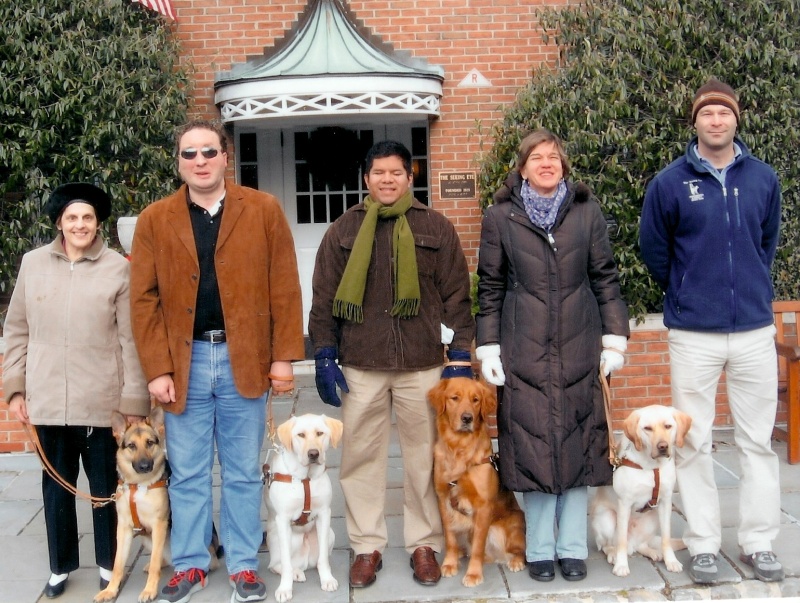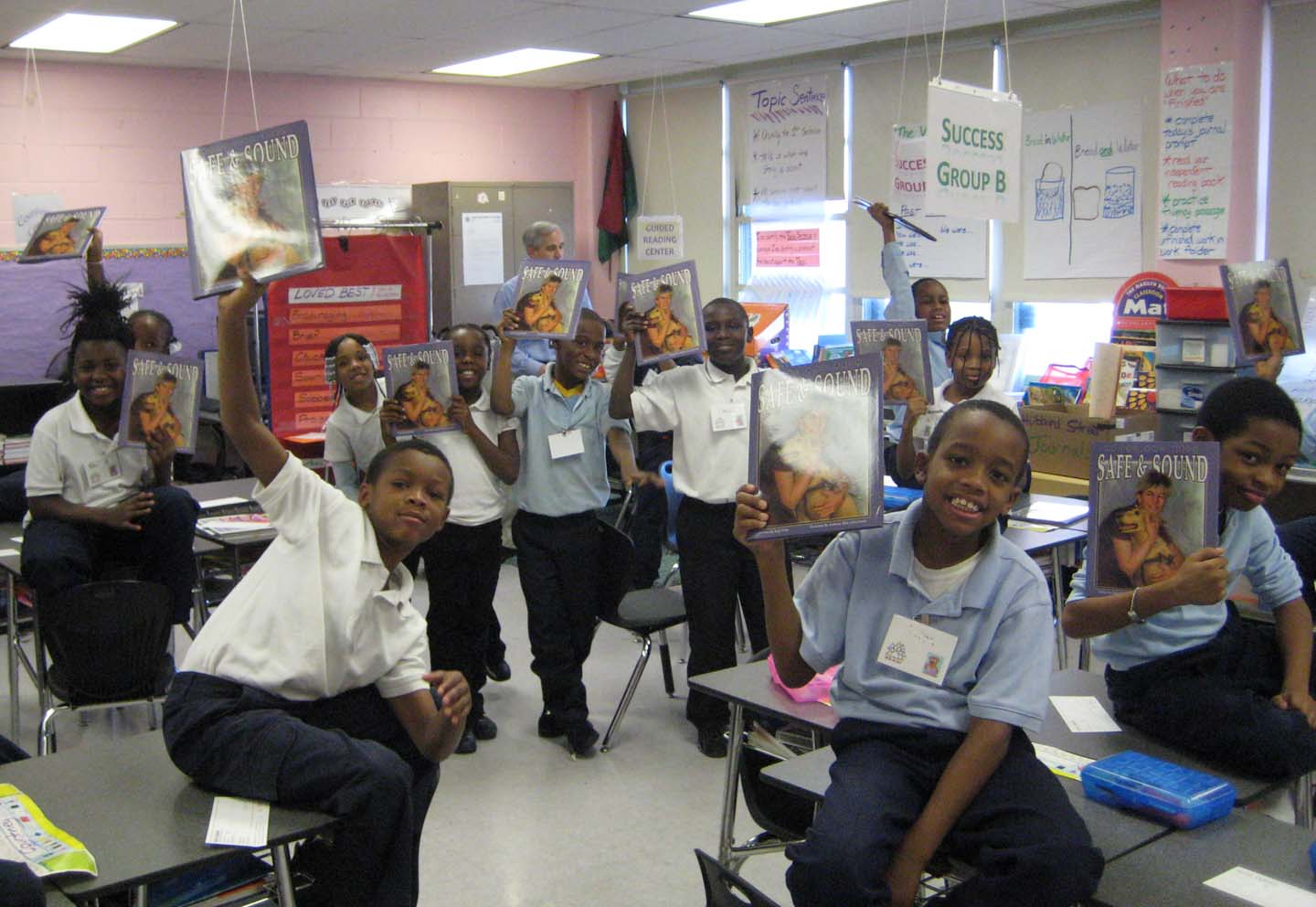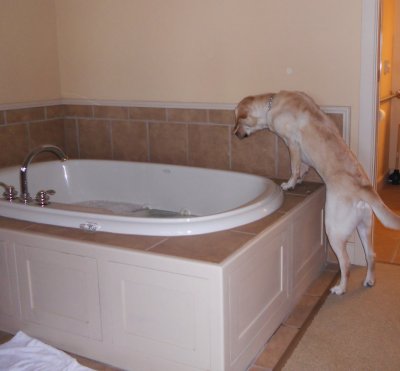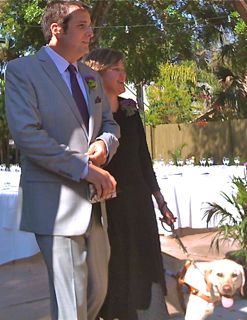Another reason to keep drinking coffee
April 5, 2011 • 13 Comments • Posted in blindness, guide dogs, Seeing Eye dogs, Uncategorized, visiting schoolsTomorrow Harper and I are taking a train to Champaign to give a guest lecture to an animal sciences class at the University of Illinois. I plan on telling the students what it’s been like transitioning to a new Seeing Eye dog, then going over some of the qualifications necessary to become a Seeing Eye trainer/instructor.
Trainers at the Seeing Eye need to have a college degree, and then they can apply for an apprenticeship. While some instructors go right from college into a Seeing Eye apprenticeship, most of the instructors I’ve talked to worked at other jobs before deciding to train dogs. From the Seeing Eye Web site:
Staff instructors are full-time employees who hold college degrees from various fields of study and have successfully completed three years of specialized on-the-job training. They relate well to dogs and people and are physically fit, since their jobs are physically demanding and involve working outdoors in all weather. Some of our current instructors came from teaching, business consulting and rehabilitation fields. Some were in the military and worked with dogs before, and many started out as kennel assistants here at The Seeing Eye.
Steve Newman, the very handsome (from what he told us) man who trained Harper, got his college degree in accounting. He got his CPA, too, and worked as an accountant until he realized he likes working with people more than numbers. He found a job as a headhunter then, but when the economy went sour, so did that career. After that he spent a lot of time at a Starbucks, using his laptop to apply for other jobs.

That’s my little group from our 2010 Seeing Eye class. Steve, our trainer, is the one without the dog.
Turns out that the Starbucks Steve was hanging out at was the very one Seeing Eye trainers use to teach dogs to navigate tight places. Steve was so taken by the string of beautiful dogs coming in and out of the coffee shop that he asked one of the trainers what it took to become an instructor. “I knew I loved dogs,” he said. “And I like working with people, too, so I decided to apply.” During his interview, Steve was warned about the long hours (including some overnights once the students get matched with their new dogs). “I’d worked as an accountant,” he told me with a laugh. “Long hours didn’t scare me.” Steve got the job , passed the three-year apprenticeship, and has been training Seeing Eye dogs ever since. It was my great fortune, and Harper’s, too, that Steve was the one assigned to my group of four last December. He’s a smart man, loves the dogs, is good with all sorts of people and is easy to laugh.
When Harper and I arrive in class to talk with those students on Thursday, I’ll be sure to remind them that guide dog instructors don’t just work with dogs. They work with people, too. We blind folks are all different ages, and we have all sorts of different backgrounds and experiences behind us. Some of us are newly blind and still adjusting, others have been blind our entire lives. Although some of us might be easy to work with, a lot of us are brats. We test our teacher’s patience. God knows I tested Steve’s, and he passed! The Puppy Place (a Web site created by a group of volunteers who raise puppies for guide dog schools) says it well:
Guide Dog trainers must work with a variety of dogs within a given size range. A great deal of walking and upper body strength is required to mold hyper young dogs into responsible workers. In the beginning, when working with dogs alone, this may not seem bad, but soon the apprentice must team dog training with people training. You can’t leash correct your blind student, or give him/her a dirty look and expect the undesired behavior or wrong actions to stop. You must verbally communicate while physically managing to keep up with the dog. Coming out of yourself to work with both dogs and people is a special skill and not one to be taken lightly.
Schools receive literally hundreds of applications a year from people who want to train guide dogs, so even opportunities to become an apprentice are rare. Most guide dog schools do require instructors to do an apprenticeship, and some apprenticeships last as long as four years. From my observation, apprentices work very hard. And from what I hear, salaries are quite low.
I have no idea what people are paid once they pass the apprenticeship and become full-fledged instructors. Considering that guide dog schools are non-profit organizations, I would guess the pay is far below what a lot of today’s college educated people expect to earn. If you’re looking for job satisfaction, though, this kind of work must be pretty dang rewarding!
For general information about working for The Seeing Eye, email jobs@seeingeye.org. That, or just start hanging out at the Starbucks in Morristown.


